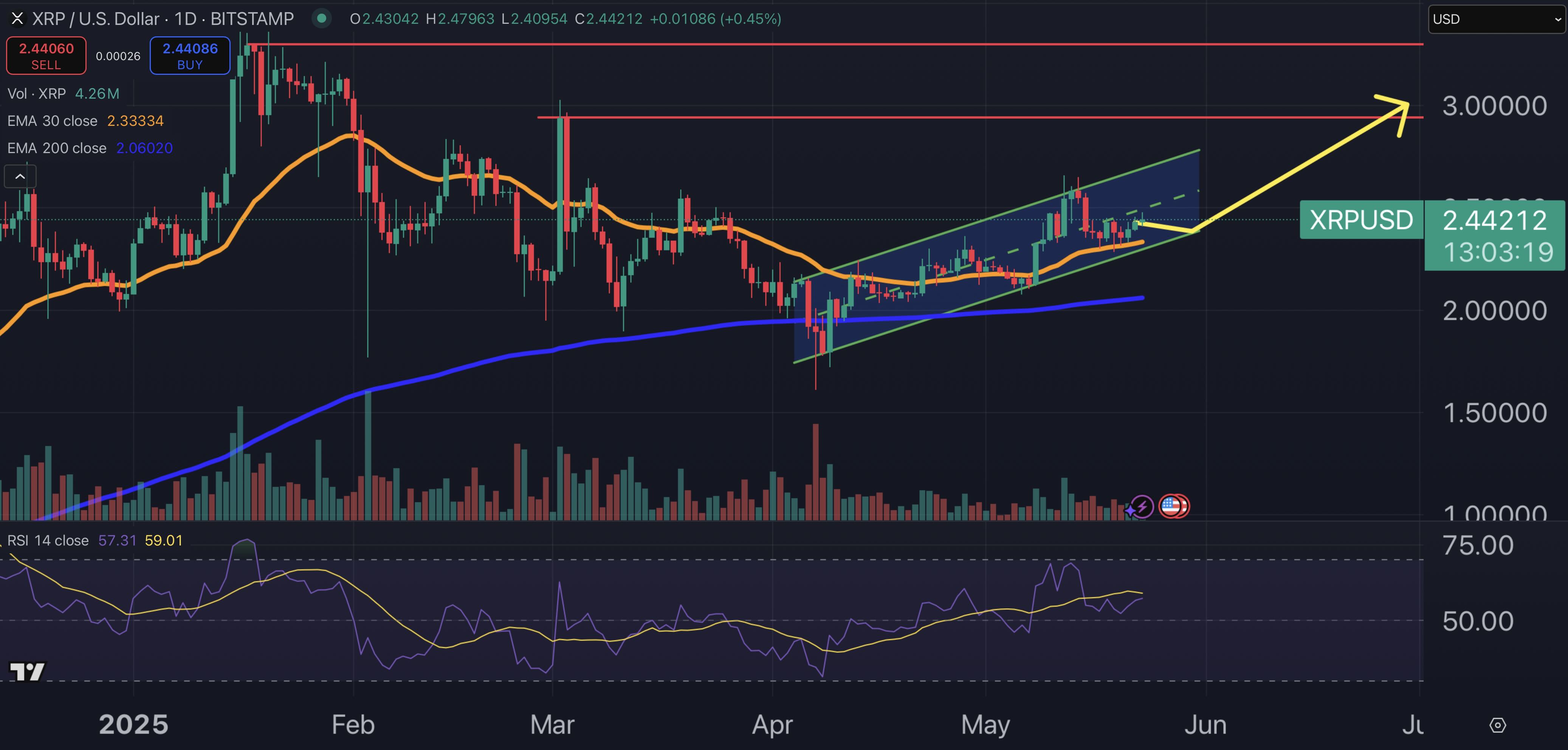WASHINGTON, DC – JULY 25: U.S. President Joe Biden participates virtually in a meeting on the … [+]
Getty Images
Geopolitical tension between the U.S. and China continues to ensue. With continuous efforts to secure America’s supply chain and increase national security to upend China’s dominance in the manufacturing and technology sectors, the U.S. government is doubling down on its measures to ensure America’s safety and economic prosperity.
Earlier this year, we saw TikTok’s CEO Shou Chew appear before Congress to defend the popular social media platform against concerns of national security due to its alleged ties to the Chinese Communist Party. With over 150 million American users—half of the U.S. population, lawmakers’ skepticism over TikTok’s ability to protect user data sparked a heated debate on whether TikTok’s parent company, ByteDance—a Chinese-owned company—would be forced to cooperate with China if requested to fork over data of U.S. citizens. During the congressional hearing, House Energy and Commerce Chair Cathy McMorris Rodgers (R-Wash) said, “TikTok surveils us all and the Chinese Communist Party is able to use this as a tool to manipulate America as a whole…We do not trust TikTok will ever embrace American values. Your platform should be banned.”
Just months after the viral showdown between TikTok and Congress, the fight over national security concerns has not abated. Refusing to relent on perceived threats of national security, the U.S. government continues to hammer down guardrails to secure the nation—now, with increased restrictions on AI chip exports to China.
U.S. Chipmakers—Nvidia, AMD, and Others Caught In National Security Crossfire
Nvidia transitioned some of its operations out of China and Hong Kong following 2022 export controls imposed by the U.S. government. Headquartered in California, 69% of Nvidia’s revenue in FY2023 was generated from sales outside of the U.S. and one its primary liquidity sources comes from cash generated from operations. Furthermore, the company utilizes third parties to manufacture and assemble its products and then holds inventory ahead of anticipated demand. As a result, long manufacturing lead times and inaccurate demand forecasting can either lead to supply shortages or excess inventory which both pose a risk to the company’s financial performance. Layered on top of that, is the government’s latest restrictions on AI chip exports to China.
Reports that Nvidia shares fell below $400 on the morning of June 28th after reaching a market capitalization of $1 trillion called into question whether the U.S. government’s new license requirements for exports of the company’s A100 and H100 integrated circuits to China and Russia played a role. In response to new government restrictions, the chipmaker rolled out the A800 and H800 chips, which are the downgraded alternatives to the high-end A100 and H100 chips operating at 70% of the speed of A100 GPUs and made exclusively for Nvidia’s Chinese market.
Nvidia confirmed in news statements that imposing restrictions on AI chips to China is cause for “permanent loss of opportunities” for the U.S. industry although the company stated that they would not anticipate any material impact in the immediate future due to a surge in demand for their AI chips, despite possible further restrictions on their A800/H800 chips. Likewise, AMD has also notified its Chinese operations that it won’t be able to sell its Instinct MI250 and MI250X chips to Chinese clients. Although their GPU production doesn’t scale in comparison to Nvidia’s, it was reported that AMD’s shares also took a hit as the government curtails AI chip exports to China.
The Semiconductor Supply Chain
WASHINGTON, DC – JULY 09: U.S. President Joe Biden signs executive order as (L-R) Secretary of … [+]
Getty Images
Semiconductors are essential to the U.S. economy, toting an abundant magnitude for innovation capable of boosting America’s competitive advantage and powering most of our ability for R&D to enhance a wide range of goods critical to the day-to-day lives of Americans. While the SIA reports that the U.S. Semiconductor Industry has nearly half of the global market share, America’s share of semiconductor manufacturing capacity has dwindled from 37% in 1990 down to about 9% by 2030 while China is moving in the opposite direction.
When President Biden took office, Covid-19 had still been an ongoing pandemic sweeping the world with unprecedented volatility as global supply chains across various industries were severely rattled. The aftermath of U.S.-China tensions on global supply chains inclined the government to place greater emphasis on methods to increase America’s resilience to economic disruption.
In relation to the semiconductor supply chain, the White House issued several briefs to address critical chip shortages along with plans to fortify economic and national security by prioritizing efforts to augment domestic manufacturing capacity for semiconductors. Included in this undertaking are the Executive Order on America’s Supply Chains, plans to bring semiconductor manufacturing back to America, and the enactment of the CHIPS and Science Act, among other White House initiatives to reinvigorate the U.S. semiconductor industry.
U.S. Semiconductor Manufacturing Capacity
For many U.S. chipmakers, including Nvidia, their finished goods inventory, components, and supply capacity are housed in Asia, which in turn makes their semiconductor operations vulnerable to geopolitical tension. Notwithstanding, the U.S.-China tech war emphasizes the need to boost U.S. chip manufacturing capacity. In 2021, Senator John Cornyn (R-TX) said that “China is building 17 foundries as we are thinking about building one, or having one built in Arizona”. Additionally, China has accelerated its output of greenfield foundries by almost 7x while the U.S. has lagged in new developments between 1990 and 2020, according to the State of AI Report 2022.
In order to thwart China’s ambition for world dominance in science, technology, and manufacturing, the CHIPS and Science Act will support over 50 new semiconductor ecosystem projects across the U.S., incentivize U.S. chip manufacturing with a $39 billion Manufacturing Incentive Program, fund the National Science Foundation (NSF) with $200 million to strengthen the semiconductor workforce pipeline and rival China’s STEM workforce, leadership, and innovation, as well as create new, high-quality jobs to form a lasting impact on the American workforce, according to the SIA.
Private investments for U.S. semiconductor production have been booming in places like Arizona, Texas, Indiana, New Mexico, Oregon, Utah, and Virginia. Geographic clusters like Arizona and Texas have been said to particularly garner such investments due to local government incentives and existing fab ecosystems in place to boost new construction capacity.
What Does This Mean For Generative AI?
Development of artificial intelligence requires powerful computer chips. AI models are most predominantly trained and run on Nvidia chips with the A100, V100, and RTX 3090 GPUs being the top three chips utilized in open source AI papers as of June 2.
According to industry sources, an AI model like OpenAI’s ChatGPT needs over 30,000 Nvidia A100 chips at $10K apiece! Generative AI is not only being used to generate text, write essays, create code, and etc., but can also scale across many industries and has far more advanced capabilities such as applications to drug design, material science, and synthetic data. And that’s just scraping the surface. The U.S. military is also leveraging generative AI in use cases for warfare systems, combat simulation, cybersecurity, target recognition, and more.
Consequently, the U.S. embargo on AI chips is a double-edged sword. China reportedly accounts for between 20% and 25% of the Nvidia’s data center revenue. Similarly, other U.S. chipmakers like AMD have considerable revenue exposure to China as well. But by cutting China’s access to foreign technology, it can effectively lose at least 20 years of development and productivity gains of militarized AI technologies, thus helping to ensure America’s national security and economic resilience.
Credit: Source link











